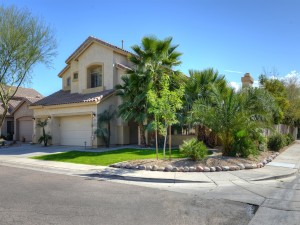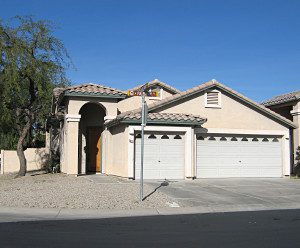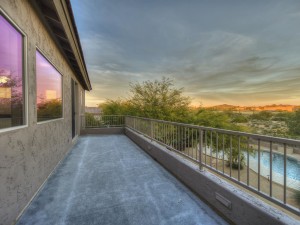Location
 Millennials aren’t the only ones flocking to popular cities such as New York, Boston, Miami and San Francisco. Some boomers are, too. After all, they want the theater, arts, culture and fine dining! The difference is that millennials, if they’re not still living with mom and dad, are moving into expensive rental units. An analysis that Zillow recently conducted for The New York Times showed that in 90 cities, the median rent is more than 30 percent of the median gross income. Meanwhile, some well-heeled boomers — eager for a lifestyle change — are buying smaller, yet more expensive homes than the ones where they raised their families in the suburbs. How’s that for downsizing?
Millennials aren’t the only ones flocking to popular cities such as New York, Boston, Miami and San Francisco. Some boomers are, too. After all, they want the theater, arts, culture and fine dining! The difference is that millennials, if they’re not still living with mom and dad, are moving into expensive rental units. An analysis that Zillow recently conducted for The New York Times showed that in 90 cities, the median rent is more than 30 percent of the median gross income. Meanwhile, some well-heeled boomers — eager for a lifestyle change — are buying smaller, yet more expensive homes than the ones where they raised their families in the suburbs. How’s that for downsizing?
Style
 A nice, yet casual-looking social hub is what millennials look for. Practicality is what it’s all about. Boomers, on the other hand, really want more of a private retreat — think vacation-like. After all, they’ve worked hard for it so why not enjoy the fruits of their labor? Boomers want their next, and final, home to be the best ever — the picture of success.
A nice, yet casual-looking social hub is what millennials look for. Practicality is what it’s all about. Boomers, on the other hand, really want more of a private retreat — think vacation-like. After all, they’ve worked hard for it so why not enjoy the fruits of their labor? Boomers want their next, and final, home to be the best ever — the picture of success.
Amenities
 Millennials and boomers alike both want clean, shiny and new move-in ready homes. And they both seem to value amenities over square footage. Accessibility and walkability are also important. But while millennials put speedy, reliable Internet performance (built-in docking stations and charging panels are a given) at the top of their must-have lists, boomers are more keen on luxury and flaunting niceties — from state-of-the-art kitchens to fancy bathrooms, large walk-in closets and more.
Please note that this Scottsdale Real Estate Blog is for informational purposes and not intended to take the place of a licensed Scottsdale Real Estate Agent. The Szabo Group offers first class real estate services to clients in the Scottsdale Greater Phoenix Metropolitan Area in the buying and selling of Luxury homes in Arizona. Award winning Realtors and Re/MAX top producers and best real estate agent for Luxury Homes in Scottsdale, The Szabo group delivers experience, knowledge, dedication and proven results. Contact Joe Szabo at 480.688.2020, [email protected] or visit www.scottsdalerealestateteam.com to find out more about Scottsdale Homes for Sale and Estates for Sale in Scottsdale and to search the Scottsdale MLS for Scottsdale Home Listings.
Millennials and boomers alike both want clean, shiny and new move-in ready homes. And they both seem to value amenities over square footage. Accessibility and walkability are also important. But while millennials put speedy, reliable Internet performance (built-in docking stations and charging panels are a given) at the top of their must-have lists, boomers are more keen on luxury and flaunting niceties — from state-of-the-art kitchens to fancy bathrooms, large walk-in closets and more.
Please note that this Scottsdale Real Estate Blog is for informational purposes and not intended to take the place of a licensed Scottsdale Real Estate Agent. The Szabo Group offers first class real estate services to clients in the Scottsdale Greater Phoenix Metropolitan Area in the buying and selling of Luxury homes in Arizona. Award winning Realtors and Re/MAX top producers and best real estate agent for Luxury Homes in Scottsdale, The Szabo group delivers experience, knowledge, dedication and proven results. Contact Joe Szabo at 480.688.2020, [email protected] or visit www.scottsdalerealestateteam.com to find out more about Scottsdale Homes for Sale and Estates for Sale in Scottsdale and to search the Scottsdale MLS for Scottsdale Home Listings.
 Please note that this Scottsdale Real Estate Blog is for informational purposes and not intended to take the place of a licensed Scottsdale Real Estate Agent. The Szabo Group offers first class real estate services to clients in the Scottsdale Greater Phoenix Metropolitan Area in the buying and selling of Luxury homes in Arizona. Award winning Realtors and Re/MAX top producers and best real estate agent for Luxury Homes in Scottsdale, The Szabo group delivers experience, knowledge, dedication and proven results. Contact Joe Szabo at 480.688.2020,
Please note that this Scottsdale Real Estate Blog is for informational purposes and not intended to take the place of a licensed Scottsdale Real Estate Agent. The Szabo Group offers first class real estate services to clients in the Scottsdale Greater Phoenix Metropolitan Area in the buying and selling of Luxury homes in Arizona. Award winning Realtors and Re/MAX top producers and best real estate agent for Luxury Homes in Scottsdale, The Szabo group delivers experience, knowledge, dedication and proven results. Contact Joe Szabo at 480.688.2020, 




 For the most part, open houses are just that — open. They make it possible for anyone to see a property in a certain time period, without an appointment or even being a very serious buyer.
New buyers should leverage the open house opportunity to get a feel for the market. In today’s world, using online search tools, mobile apps and the open house, a buyer can start to get a feel for pricing and the market before committing to an agent. Most importantly, open houses are some of the best ways for buyer and agent relationships to start.
For the most part, open houses are just that — open. They make it possible for anyone to see a property in a certain time period, without an appointment or even being a very serious buyer.
New buyers should leverage the open house opportunity to get a feel for the market. In today’s world, using online search tools, mobile apps and the open house, a buyer can start to get a feel for pricing and the market before committing to an agent. Most importantly, open houses are some of the best ways for buyer and agent relationships to start.
 By
By 


